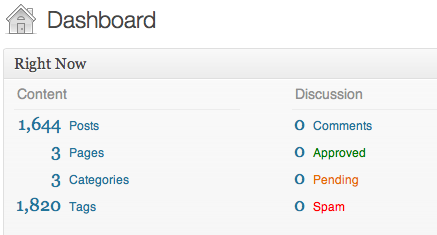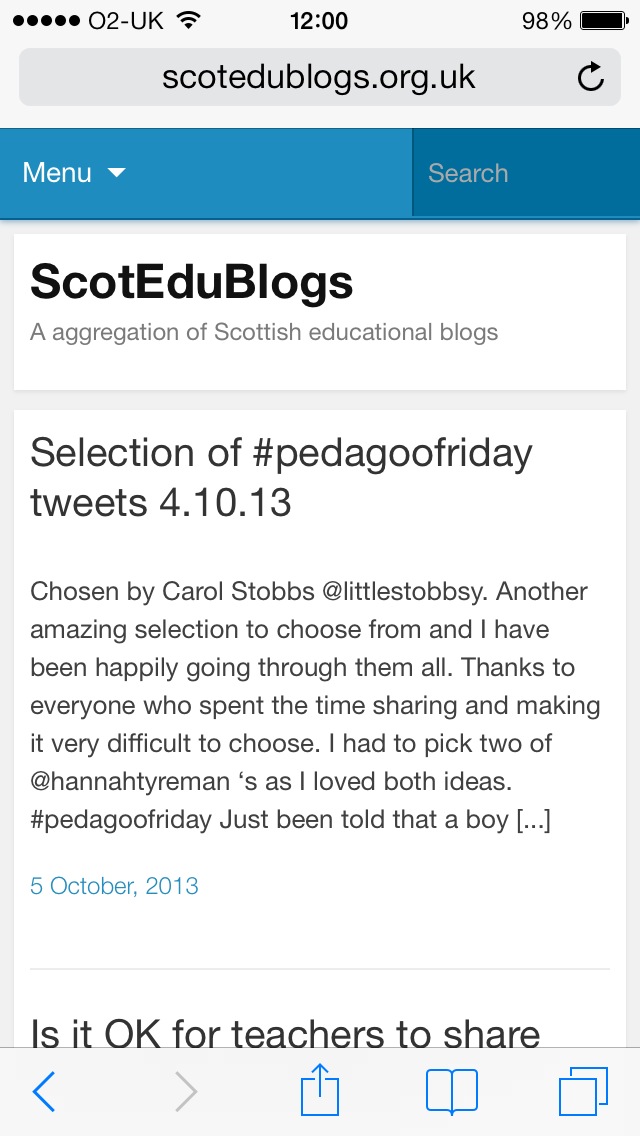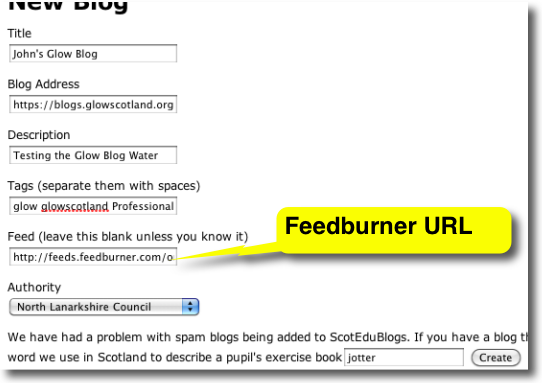After a few years of laying fairly fallow I’ve got a bit of time to work on ScotEduBlogs.
The site had chuntered on mostly under its own steam for a while. Mostly auto-updating, all I need to do was to keep the site & domain up and running.
ScotEduBlogs is a site that aggregates and shares posts from Scots Educational Blogs running since 2007. It also posts out links, for the original posts, to mastodon and bluesky.
I’ve retired from teaching this summer so hopefully have a bit more time to promote the site. I’ve just added a few sites into the mix:
- Blue Collar whose author submitted the form, first in a while.
- The Interdisciplinary Learning Network this blog moved from WordPress to Substack, with permission I added the feed from there.
- Memory and Metacognition Updates Jonathan Firth moved to Substack too.
I am hoping to find some more, these sites have certainly increased the diversity of posts aggregated.
Why
- I think it is valuable to read the voices of educators at all levels.
- I am doing this as a ‘hobby’ I like blogs and blogging.
- It doesn’t cost much. I am not making any money from SEB. The domain, hosting and a bit of time I can manage.
- I am fascinated by the technology, especially RSS aggregation and re-distribution.
- I like reading blogs.
Can you help?
I’d like to add more voices to the site. If you know an educational site with a feed (Blogs or substacks for example) please let me know about it. If you blog about education send me your site. You can fill in the form or send me an email.
Please pass this on, I am a lot less networked than I was in the noughties.
One of the main problems with SEB that is run by me. Andrew McLaughlin pointed this out a while back.
this currently hinges on centralised moderators to update and organise the aggregator.
I cannot say I disagree. I’ve never turned down a request for addition other than sites that, don’t support RSS or ones that are not about education in Scotland. Having seem the number of spam pages that have been created on the teachMeet Wiki I don’t think automatic inclusion is an option. But there is a need for more involvement, I’ve had ideas about that, and am open to discussion.








